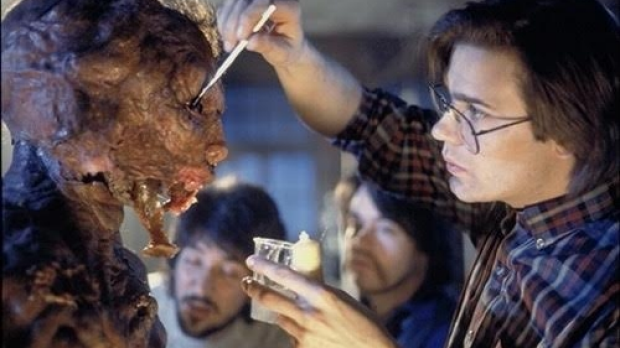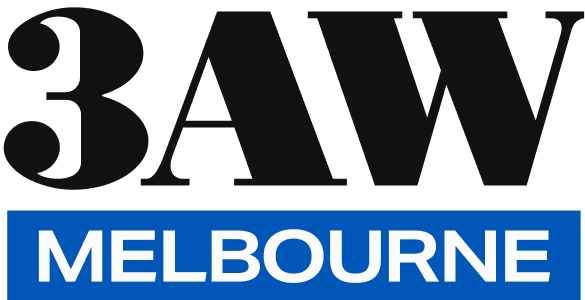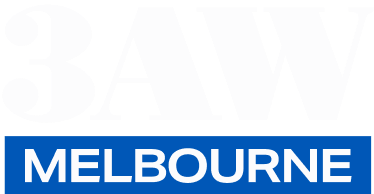INTERVIEW: Jim Sherlock speaks with Oscar-winner Chris Walas

CHRIS WALAS INTERVIEW
‘Be afraid, be very afraid’ …
Legendary Oscar-winning special make-up and special effects wizard and director Chris Walas has been responsible for some of the most prolific, eye-popping and unforgettable images on the screen for more than three decades of cinema.
His groundbreaking work includes ‘Piranha for director Joe Dante, the sci-fi parady ‘Galaxina,’, the comedy classic ‘Flying High,’ David Cronenberg’s ‘Scanners,’ Steven Spielberg’s ‘Raiders of the Lost Ark,’ the jaw-dropping dragon in ‘Dragonslayer,’ the creature design & effects on George Lucas’ ‘Star Wars: Episode VI – The Return of the Jedi,’ Gremlins creator on the cult classic ‘Gremlins,’ and ‘Enemy Mine.’
Chris won as Oscar for his nerve shattering work on David Cronenberg’s horror blockbuster ‘The Fly,’ followed his directorial debut, effects designer and creator on ‘The Fly II,’ the William Friedkin thriller ‘Jade,’ and again for David Cronenberg as special creatures and effects on ‘The Naked Lunch’ among many others.
Creature-features have been a popular diet on the screen since the beginning of cinema itself, and never more-so popular than today.
Through such landmark films as ‘Frankenstein,’ ‘King Kong,’ ‘The Thing,’ ‘Godzilla’ and ‘Them,’ filmmakers Howard Hawks, Roger Corman, David Cronenberg, George Lucas, Ridley Scott, Steven Spielberg, James Cameron, and far too many others to mention, have all had their imaginations stimulated and been heavily influenced from an early age, and they continued to forge groundbreaking careers with ‘Jaws,’ ‘Star Wars,’ ‘Alien,’ ‘Aliens,’ ‘The Fly,’ ‘Jurassic Park’ and ‘Avatar.’
Even screen legends Clint Eastwood and Steve McQueen began their road to super-stardom in such creature-feature classics as ‘Revenge of the Creature,’ ‘Tarantula’ and ‘The Blob.’
Many startling images and creature creations created from the mind and through the hands of Chris Walas have gone on to inspire many generations of filmmakers and stun audiences everywhere.
To commemorate the exclusive Australian release of ‘The Fly: The Ultimate Collection’ eight disc DVD and five disc Blu-ray featuring for the first time anywhere in one boxed set, stunningly remastered editions of the all-time creature-feature classics ‘The Fly’ (1958), ‘Return of The Fly’ (1959), ‘Curse of The Fly’ (1965), ‘The Fly’ (1986) and his directorial debut with ‘The Fly II’ in 1989, Chris Walas has given us some of his valuable time for this very special interview.
I first asked if there was one movie as a young boy that inspired him the most?
CHRIS WALAS: ‘I would have to say that the film that most inspired and was definitely the decisive point in my future career was Ray Harryhausen’s ‘Jason and the Argonauts’. It was the first film I ever saw in a theater. I was ten years old and I was totally blown away, not only by the astonishing technical work, but by the whole fantasy content of the story. I didn’t understand what I was seeing at the time, but somewhere down inside me, at that moment, I decide that somehow and someway I was going to be a part of creating that kind of movie magic.’
How influential have the early creature-feature films of the 1950s and 1960s been in your life?
CHRIS WALAS: ‘Ha-ha. The old creature feature didn’t influence my life, they WERE my life! I was a monster kid as far back as I can remember and I lived to watch all the old monster movies, whether they were good or bad. I’d run to the kitchen afterward and make clay versions of whatever monster I had just seen. It was a great time and the old films really fired my imagination. And honestly, they still do.’
Which other Make-Up and Special Effects artists have been a major influence to you?
CHRIS WALAS: ‘I would say that as a kid, Ray Harryhausen was the biggest influence on me. He artistry and imagination seemed boundless and the fantastic images he created burned themselves deep into my psyche. I think somehow his influence is always in everything I do, whether I’m conscious of it or not. In my teen years, it was Dick Smith who became a real inspiration. He wrote what was essentially a monster kid guide to creating monster make-ups using household or relatively easy to get materials and techniques. I think that book sponsored and entire generation of monster make-up artists!’
What are the difference in sensibilities between ‘Raiders of the Lost Ark,’ a comedy such as ‘Caveman’ and more intense films such as ‘Scanners’?
CHRIS WALAS: ‘It’s not simply the difference of sensibilities that comes into play for different kinds of films. Budget is a huge element. Sometimes you just can’t afford the right materials to do the best job. Sometimes there simply isn’t the time to go through full process you should and you have to take shortcuts. There are a lot of elements that go into making practical effects work and work well. Nowadays, a lot of what was completely experimental in practical effects is commonplace and tutorials and materials are as close as the internet. There was a lot more legwork in the old days, but the effort was always about doing the very best job possible in the given situation.’
Was it your work on ‘Scanners’ that got you the job on ‘The Fly’? … And how different was Mr. Cronenberg as a director from 1981, 1986 and 1991 when you worked with him on ‘Naked Lunch?
CHRIS WALAS: ‘When The Fly came around I was doing well after Gremlins and was being offered a lot of the top jobs in town, so I’m not sure that working on Scanners was particularly the reason I got the job. I was just a little higher on the list in town at the time. The one thing I noticed over the years watching David Cronenberg was the growing mastery over the medium of film. Scanners was a film that was rushed into production to meet a government grant or something like that, so it was a bit of a hectic production. But even then, David had his calm and collected manner on set. That never changed as far as I saw. What I witnessed was David honing his filmmaking skills to get ever closer to truly portraying his vision. It was always an education watching him work.’
How exhaustive and time-consuming were Oscar winning effects to create and operate in ‘The Fly’?
CHRIS WALAS: ‘The Fly was one of the toughest shows I ever worked on, simply because we had much less time than we needed in pre-production. Half the time we normally have. So it was a mad panic from the word go and my team and I had to pull a lot of stuff together very quickly for the film. We had many versions and copies of the make-ups to make and pre-paint. We had inside out monkeys, the maggot baby, all the different versions of the final Brundlefly puppet and more to construct. It became a real challenge as I had my shop in California still creating major effects works while we were already shooting in Toronto. A large portion of the puppets that were used at the end of the film could only be cosmetically finished to a certain point and I would have to do the final work in Toronto, between scenes. So I wound up having to do an awful lot of running back and forth on the stage. Fortunately, I had a fantastic crew that could handle anything that came our way.’
Did you ask Mr. Cronenberg for any advice when directing ‘The Fly II,’ or did you want to forge your own path and create a singular vision that would allow the sequel to succeed in its own right?
CHRIS WALAS: ‘I didn’t really ask David specifically for advice as I remember. To be honest, the one thing there seemed to be too much of was advice on directing. Everyone at the studio was giving me input to the point where I just had to sort of shut them out of my mind so I could think clearly about the project.’
What was the greatest challenge of ‘The Fly II’?
CHRIS WALAS: ‘Fly II was a mixed blessing for me. It was a chance to direct, but the studio wasn’t interested in an intelligent follow up to Cronenberg’s masterpiece. They insisted I make a teen date movie, without too much thinking in it. I was assigned my main leads and the writer’s strike hit after Frank Darabont’s first draft. So it wasn’t the most appealing entry into directing I could imagine. But it was a fantastic crew and the actual production was a wonderful education for me. So the challenge for me was to keep the production values as high as I could and make the film look as professional as possible. The battles I had with the studio were more about my choices for writer, composer and director of photography. After the production, one of the execs came up to me and apologized for hassling me so much about them and told me I was absolutely right about them! But I will say it was difficult for me to separate myself from the effects work. I kept wanted to operate the puppets!’
The 1986 ‘The Fly’ certainly has a place in cinema history, as does the 1958 original. Are you proud that this film shows that a remake can actually be a stand-alone feature, filled with its own imagination, ideas, and vision? Are there any remakes out there that you feel succeed in the same way ‘The Fly’ did?
CHRIS WALAS: ‘Unfortunately, most remakes are simply updates. Newer actors, better technology, contemporary lingo, etc. But the same story essentially. When I was first approached to do the The Fly, I turned it down simply because I like the original film and didn’t see the need to remake it. But when I read the script I realised that it wasn’t simply a remake; that it took the basic concept and elevated it to a whole new level.
I’m very proud to have been a part of this film and I think the effects work holds up fairly well. But more importantly, I think the film has retained its intimate emotional impact over the years and there are a lot of once great films that can’t make that claim.’
Was it a surprise when you won the Oscar for Best Make-Up Effects for ‘The Fly,’ given the film’s graphic imagery and horror themes? Were you disappointed that the film itself didn’t get more nominations, especially Jeff Goldblum, who was deservedly tipped to get a nomination?
CHRIS WALAS: ‘I was surprised when the film was nominated, to be honest. And I was astonished when it won. I’m not really into awards and such, but it’s hard to ignore winning an Academy Award. At that time, horror films were still struggling for equality in the studio system and were looked down on by the more ‘respectable’ filmmakers. I think The Fly actually helped to start break down some of those walls. My entire crew was crushed when Jeff didn’t get nominated. We, more than anyone else, knew how much he truly deserved it and what and astonishing performance he had turned in. I had hoped David Cronenberg had a chance at a nomination as well as the film really is a masterpiece of filmmaking.’
Did Eric Stoltz have any reservations about his role in ‘The Fly II,’ specifically all the make-up that would be put on him, after his character in ‘Mask’?
CHRIS WALAS: ‘If he had any reservations, he never brought them up to me. In fact, he seemed to look forward to it. I asked him that question at our first meeting and, being a professional actor, he didn’t seem to question it at all, it was just part of the job. And he was wonderful and patient sitting through hours and hours of wearing the make-ups on the set.’
The make-up effects in ‘Enemy Mine’ are truly astounding. How long did it take to make up Louis Gossett Jr., and was it uncomfortable for him?
CHRIS WALAS: ‘When we first tested the make-up on Lou, the make-up took all afternoon. In production, we managed to get that down to about an hour and a half. The make-up itself wasn’t especially uncomfortable, except perhaps the lenses, but Lou had sensitive skin and we wound up having to use a water based adhesive designed for sensitive skin. It was wonderful to watch Lou perform. He always did something a little different in every take just to keep his performance alive. A very talented actor.’
How much work did you do on ‘Dragonslayer,’ as the meticulous, large-scale work on the title creature is amazing?
CHRIS WALAS: ‘I sculpted all the parts for the go-motion walking dragon, which Phil Tippet assembled and painted. I did all the moulds and built the puppets for the baby dragons, which Ken Ralston sculpted and painted. I did the close up mechanical puppet head and made several odd dragon bits for specific shots here and there. There was plenty of work for everyone on that show!’
Do you have a favourite ‘Make-Up’ or ‘Special Effect’ moment in film?
CHRIS WALAS: ‘I’ve always been a big fan of gorilla movies of the ’30s and ’40s. There’s just something about a guy in an ape suit. And the best of the bunch was a true talent named Charlie Gemora. He had built and performed a number of gorilla suits for dozens of films and worked with the likes of Laurel and Hardy and the Marx Brothers. But a favorite suit and performance were in a little B movie called ‘the Monster and the Girl’. Charlie’s suit is fantastic and full of character and emotion, even though it has no facial movement except the mouth opening and closing. And his performance is exceptional. Charlie was the only gorilla actor to actually study gorilla movement and he set the stage for all the later, more technically advanced gorilla men. Not the most spectacular effect, but richly memorable and a favourite.’
In 1980 Chris worked on the science-fiction parody GALAXINA which starred the beautiful and talented Dorothy Stratton, in her first and only starring role, who was tragically murdered her estranged husband-manager in August 1980 at the age of 20, soon after the release of the film.
She had just completed her final film, the romantic comedy ‘They All Laughed’ for director and partner Peter Bogdanovich, also starring Audrey Hepburn, Ben Gazzara, John Ritter and Colleen Camp.
How much did it affect him and everyone who worked on ‘Galaxina,’ when this beautiful rising star was so tragically and brutally murdered only weeks after the film’s release?
CHRIS WALAS: ‘Dorothy and I became friends on the show and kept in touch afterward. I’ll never forget the day she was killed. I was beyond shocked. The next day I got a package from her. She had sent me an award she had been given at a film exhibitors’ convention. It read ‘Most promising entertainer of the year.’ I think everyone was devastated when it happened. She was such a nice person.’
Another sad loss to Hollywood and audiences recently was the much loved ALIENS, TWISTER and TITANIC, among others, co-star Bill Paxton.
You directed the black comedy-thriller ‘The Vagrant,’ starring Bill Paxton, what are your memories of Bill Paxton and if there were any moments that occurred between them during filming he could share?
CHRIS WALAS: ‘The Vagrant was a crazy show and Bill was a big part of the craziness. He was without doubt, a larger than life character. So full of energy that he overwhelmed anywhere he went. He talked to everyone, all the time. He would stop passer-bys between scenes to chat. We had a scene with an old woman and Bill in it. It turned out that Bill had worked once before with this actress. He obviously had good memories as he was immediately glued to her side for the shoot, watching over her and taking care of her like a relative. He was a very caring person.’
What ‘Jaws’ did to swimmers, ‘The Fly’ does to the domestic house fly, You’ll never look at them the same way again.
The Eight Disc DVD & the Five Disc Blu-ray Boxed Set Includes:
The Fly (1958).
Return Of The Fly (1959).
Curse Of The Fly (1965).
The Fly (Anniversary Special Edition) (1986).
The Fly II (Special Edition) (1989).
Special Features:
The Fly (1958):
- Audio Commentary With David Hedsion & Historian David Del Valle.
- Biography: Vincent Price Documentary.
- Fly Trap: Catching A Classic.
- Fox Movietone News.
- Theatrical Trailer.
The Fly (1986):
- Audio Commentary With David Cronenberg.
- Fear Of The Flesh: The Making of The Fly.
- The Brundle Museum of Natural History.
- Deleted Scenes.
- Extended Scenes.
- Film Tests (visual effects).
- The Fly II (1989):
- Audio Commentary With Chris Walas & Historian Bob Burns.
- Deleted Scene.
- Alternate ‘houseboat’ Ending.
- Trailers.
- The Fly Papers: The Buzz on Hollywood’s Scariest Insect.
- Transformations: Looking Back At The Fly II.
- Film Production Journal.
- Composer’s Master Class: Christopher Young.
- Original Theatrical EPK.
- Storyboard To Film (Optional Commentary).
‘The Fly: The Ultimate Collection’ eight disc DVD and five disc Blu-ray is available through JB HI-FI and all major DVD and Blu-ray retailers, or visit www.viavision.com.au















